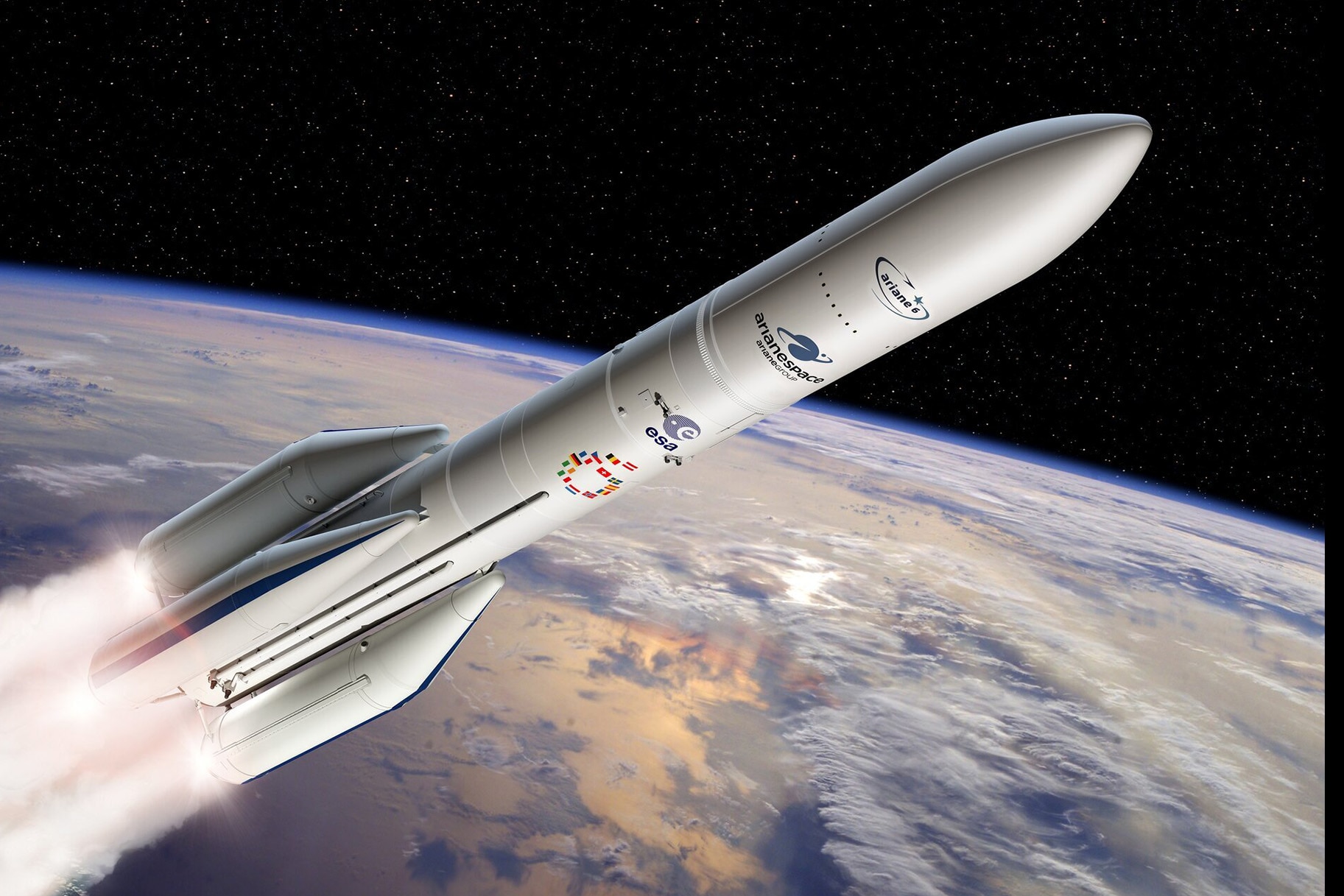Create a free profile to get unlimited access to exclusive videos, sweepstakes, and more!
Ariane 6: The ESA's Newest Rocket Prepares for Inaugural Launch Date
The European Space Agency's newest rocket is ready for launch.

The space race may have begun as a sprint for the Moon between the United States and the Soviet Union, but it has evolved into a relay race involving hundreds of space organizations and private companies. Today, cooperation between dozens of nations and hundreds or organizations is resulting in even more powerful launch vehicles and spacecrafts, the likes of which might one day give The Ark a run for its money.
With any luck one of those efforts, the Ariane 6, the newest rocket from the European Space Agency (ESA), will blast itself into space this summer. The Ariane 6 is the ESA’s latest launch vehicle, designed to be flexible in its delivery of medium or large payloads into low-Earth orbit (LEO) or geostationary orbit. The first flight of the Ariane 6 is slated for the beginning of July, and it won’t just be a dress rehearsal.
For More on Spacecrafts:
How Much Does It Cost to Launch a Falcon 9 (and Other Rockets)?
Boeing Prepares for Its First Crewed Launch of Starliner Crew Capsule, Atop an Atlas Rocket
Dream Chaser Space Plane Prepares for First Flight to ISS
The ESA’s Ariane 6 Rocket Prepares for First Flight
As the space economy continues to evolve, the ESA recognized a need for a more flexible launch vehicle, capable of carrying everything from small Cubesats to huge payloads to a variety of orbits. The Ariane 6 is designed to meet those needs with a one-size-fits-all rocket. It stands approximately 200 feet tall (60 meters), weighs 900 metric tons (about 992 U.S. tons), and comes in two forms with a number of possible internal configurations.
“Ariane 6 is designed to be versatile, offering space actors bespoke launch options all while keeping costs down. The varied missions launching on the first flight, from nine countries and dozens of organizations, are a perfect demonstration of the team spirit behind this rocket and the design ethos that underpins it," said Michel Bonnet, head of Ariane 6 missions and system engineering and ESA’s lead for the Ariane 6 inaugural flight, in a statement.
The smaller version, dubbed the Ariane 62 has two solid rocket boosters capable of carrying 22,700 pounds (10,300 kilograms) into LEO and 9,920 pounds (4,500 kilograms) into geostationary orbit. The larger version, dubbed Ariane 64, has four boosters and can carry 45,400 pounds (20,600 kilograms) into LEO or 25,350 pounds (11,500 kilograms) into geostationary orbit.
After a decade of design, construction, and testing, the rocket is on-site at the European spaceport in French Guiana, built and maintained by France’s National Centre for Space Studies (CNES). The spaceport is only 5 degrees north of the equator, which means that eastbound launches from that location gain an added boost from the rotation of the Earth. The rocket is made up of three main parts: the boosters (either 2 or 4), the main stage, and the upper stages, which collectively make up the central core. The main stage and rocket boosters will lift Arian 6 off the ground and into space. Once there, the nose cone will split vertically to reveal the payloads stowed safely inside.
Ariane 6 Payloads and Launch Date
The inaugural flight of the Ariane 6 will carry a number of satellites and experiments from universities, research organizations, and private companies. It will have experiments designed to study gamma rays and black body radiation alongside self-healing solar cells and a smart-farming satellite, just to name a few. In total, the nose cone will ferry nine satellites and two reentry capsules, as well as a number of experiments designed to stay mounted to the rocket from launch to reentry and burnup.
At an altitude of about 375 miles (600 kilometers) above the Earth, the faring will open and Cubesat deployers will use spring-loaded ejections to shoot the satellites into space at the right time and at the right velocity. The satellites don’t have their own propulsion systems, so they are dependent on the deployers to put them into the correct orbit.
In 2023, the ESA announced a loose launch window sometime in June or July 2024 and the Ariane 6 is right on track. On May 21, 2024, the ESA announced an updated window, narrowed to the first two weeks in July. A precise tentative launch date will be announced during the upcoming ILA airshow in Germany, taking place between June 5 - 9, 2024.
The Ark will return for Season 2 beginning Wednesday, July 17 at 10/9c on SYFY. Catch up on Season 1 now on Peacock.



























